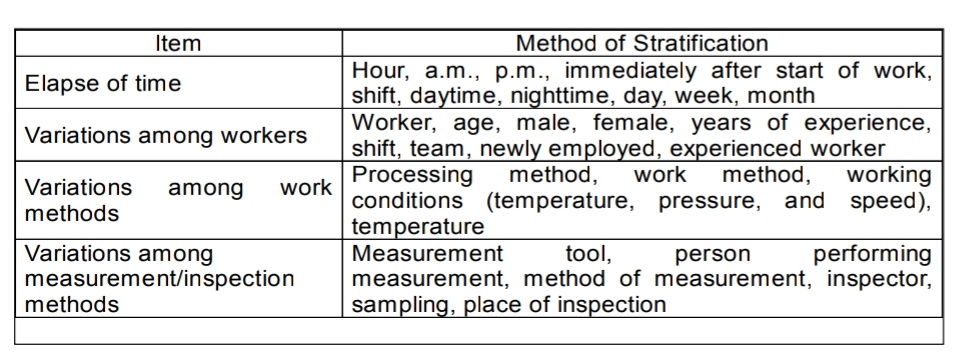1. What is Stratification?
Stratification means to “divide the whole into smaller portions according to certain criteria.” In case of quality control, stratification generally means to divide data into several groups according to common factors or tendencies (e.g., type of defect and cause of defect).
Dividing into groups “fosters understanding of a situation.” This represents the basic principle of quality control.
2. When is it used and what results will be obtained?
The “common and basic principle” of quality control is stratification, i.e., to think a matter out by breaking it into smaller portions.
Stratification has a number of useful purposes. The table below shows only a few examples of these purposes.
Method
Grouping by day, time, place, worker, or process
Usage
- Used to observe variations among strata.
- Used to identify the relationship between cause and effect.
- Used to identify a purpose and means to serve the purpose
[Used during phases to monitor the situation, analyze causes, review effectiveness of an action, perform standardization, and implement a selected control measure.]
Result
Allows observation of variations among strata.
By performing a cause analysis using the stratified data, the following can be accomplished.
1.Identification and control of a problem
2.“Division of data (obtained by using each QC tool) into several groups”


